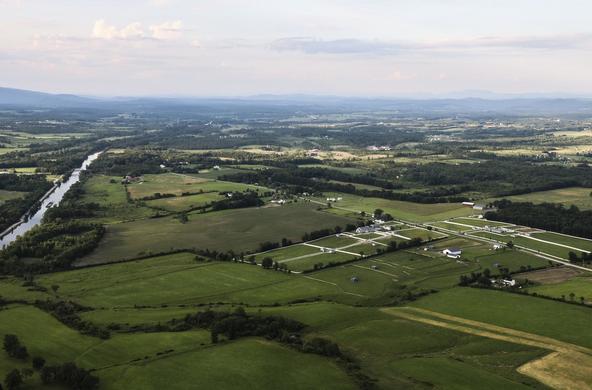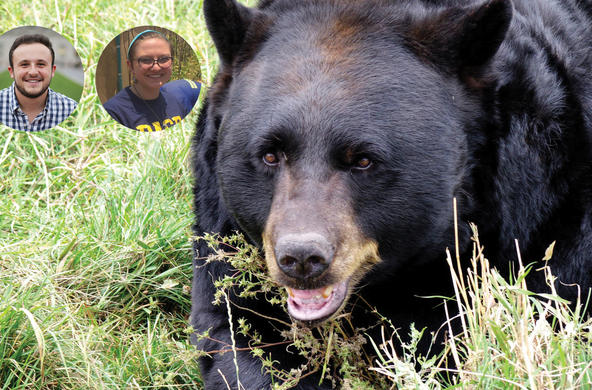Last week, a group of researchers published saddening news about "sudden oak death," spread by an invasive water mold, that has killed over a million trees in coastal California. The pathogen, they found, simply cannot be stopped — though it can still be contained, and the harm mitigated. But it is too extensively established now in California to eradicate.
Unfortunately, it's a familiar story. The U.S. is subject to the introduction of 2.5 new invasive insects into its forests ever year, according to a comprehensive new analysis of this problem, in the journal Ecological Applications, by Gary Lovett of the Cary Institute of Ecosystem Studies and a group of 15 colleagues from Harvard, the U.S. Department of Agriculture, and numerous other institutions. And that number is just for insects — it doesn't count diseases, like sudden oak death.
The study finds that the rate of these invasions is increasing, because it is fundamentally related to global trade, which keeps on growing — and that already, their "likely" toll is in the billions of dollars every year. "If you look at the accumulation of pests in our forests, it's pretty clear to me that we're not doing a sufficient job," Lovett says.
Indeed, the study calls these invasive pests the "most serious and urgent near-term ecological threat" to U.S. forests — which we rely on not only for cultural and recreational reasons but also to store carbon, filter water, host diverse biological life and much more. It also notes that species invasions are the only known threat "that has proved capable of nearly eliminating entire tree species, or in some cases entire genera, within a matter of decades."
The case study of this is the American chestnut, which was felled in enormous quantities by the chestnut blight during the 1900s. "The American chestnut tree reigned over 200 million acres of eastern woodlands from Maine to Florida, and from the Piedmont west to the Ohio Valley, until succumbing to a lethal fungus infestation ... An estimated 4 billion American chestnuts, 1/4 of the hardwood tree population, grew within this range," notes the American Chestnut Foundation.
Such is the devastating power of a species invasion, and yet, the issue gets relatively little attention or resources. "The government responds to crises, like a forest fire, for sure," Lovett says. "This is more of a slow-motion crisis. It's probably the biggest threat to forest health in the country, but it unfolds very slowly, so it doesn't get the attention that it deserves."
The highest concentration of invasive pests and diseases assails forests of the eastern and northeastern U.S., the research finds — where the chestnut once dominated, and where, more recently, an insect called the hemlock woolly adelgid is busy taking out hemlock trees.
This, in turn, imperils bird habitats and clears the way for sometimes invasive plants to take root. And that's still just the beginning — hemlocks extend their growth over streams, providing cooling from the sunlight, which in turn creates fish habitat. So in a classic case of cascading negative effects within an ecosystem, fish like trout are also damaged by the loss of hemlock.
But it's not just the east. The invaders are everywhere — white pine blister rust, for instance, kills a high altitude western species, whitebark pine, which is now in need of endangered species protection.
The study also finds that the most economically impactful damage often occurs in cities, not in the countryside, when invasive pests and diseases take out urban trees, damaging home values and triggering large repair and replacement costs. And Lovett notes that these estimates don't even include many of the less tangible forms of damage that occur in cities whose trees are killed by invaders (trees have been repeatedly shown to have beneficial effects on human physical and mental health).
An accompanying report issued by the Cary Institute cites just one example of this type of urban impact. The city of Worcester, Mass., it notes, lost some 34,000 trees to the Asian longhorned beetle between 2008 and 2015. This, in turn, eroded at least five separate benefits provided by trees, the report suggests: Lowering energy costs (through shading), stowing away carbon, pulling pollution out of the air, cutting down on runoff of pollution-laden water during storms and increasing the value of homes.
The research notes that the single most devastating insect invasion, so far, appears to be the Emerald ash borer, a colorful green beetle native to Asia that does exactly what its name sounds like — bores holes in ash trees. It's now in 27 states, and the ultimate cost could be $ 12.7 billion, the group says — because there are 8 billion ash trees in the U.S. that could be felled. Already, "hundreds of millions" have died, and there's a particular threat to urban areas, where much ash is planted.
"Ironically, in many neighborhoods, ash trees were planted to replace American elms (Ulmus americana) killed in the mid-20th century by Dutch elm disease, an introduced pathogen vectored by an invasive beetle," the study says.
All of this should worsen, the research suggests — because invasions appear to be correlated with the growth of international trade. The paper therefore suggests the U.S. must get a great deal more defensive in its outlook toward the massive numbers of imported goods that carry with them a pest risk. The researchers in particular single out live plant imports — which number 3 billion per year — and wooden packing crates and pallets, which insects bore into.
The study suggests going so far as banning wood packing materials entering the U.S. (among other policy possibilities), and strengthening of quarantine measures for live plant importations.
"A lot of the attention is focused on stopping the spread of pests that are already here, but we really need to focus on stopping the next one, not the last one," Lovett says.






